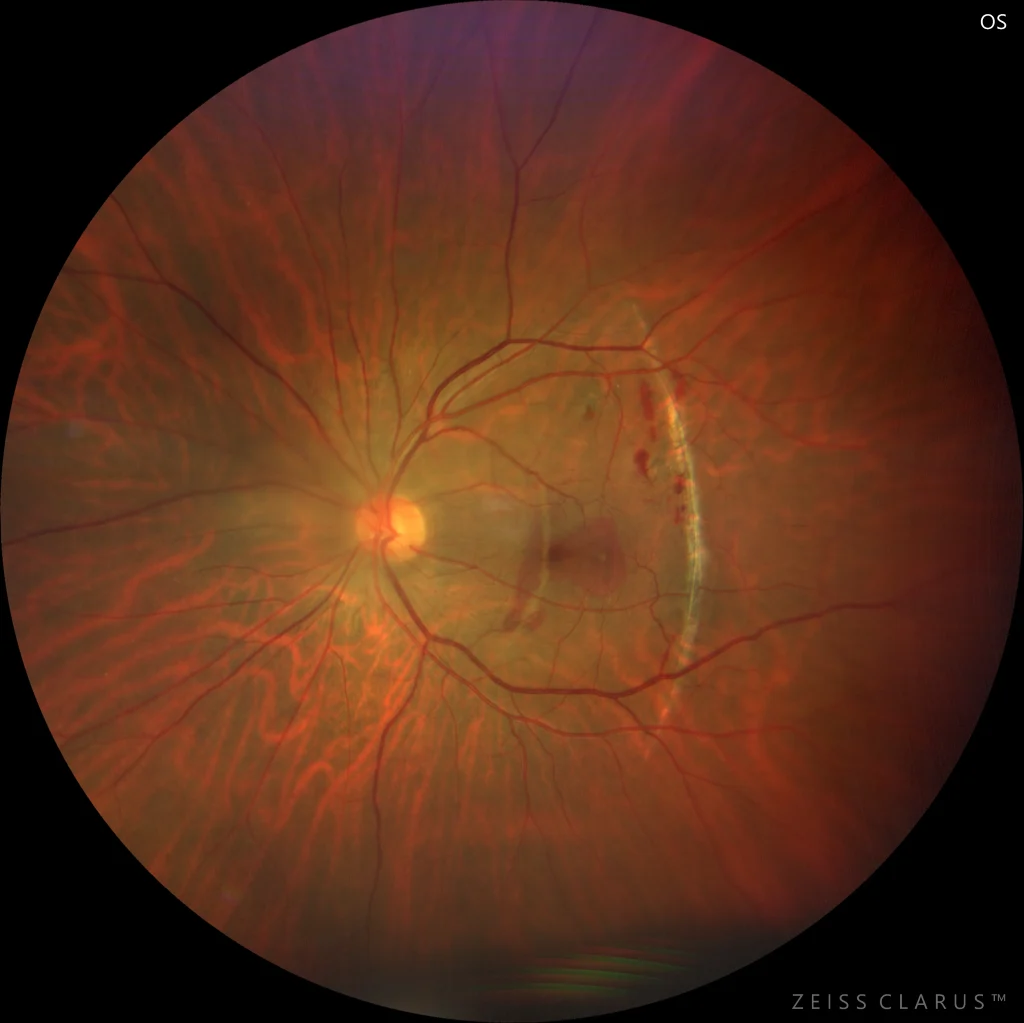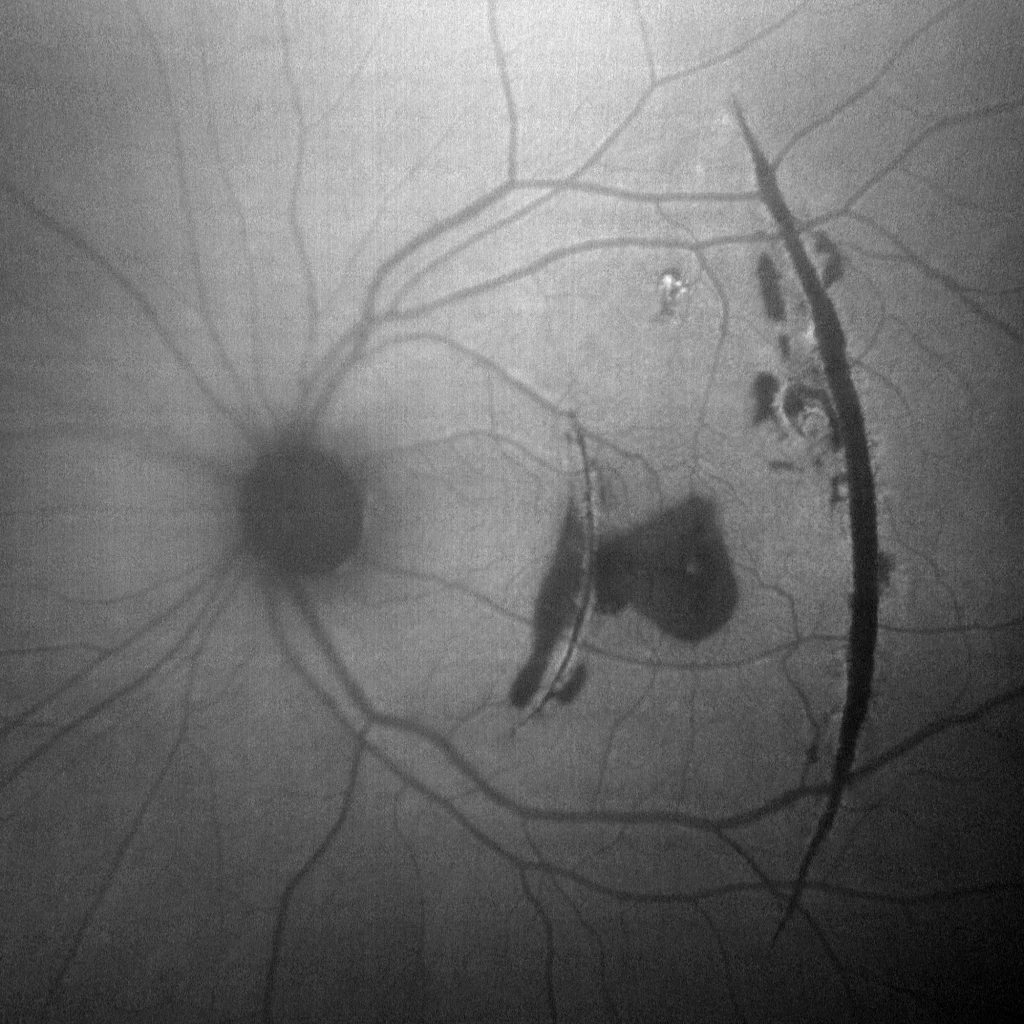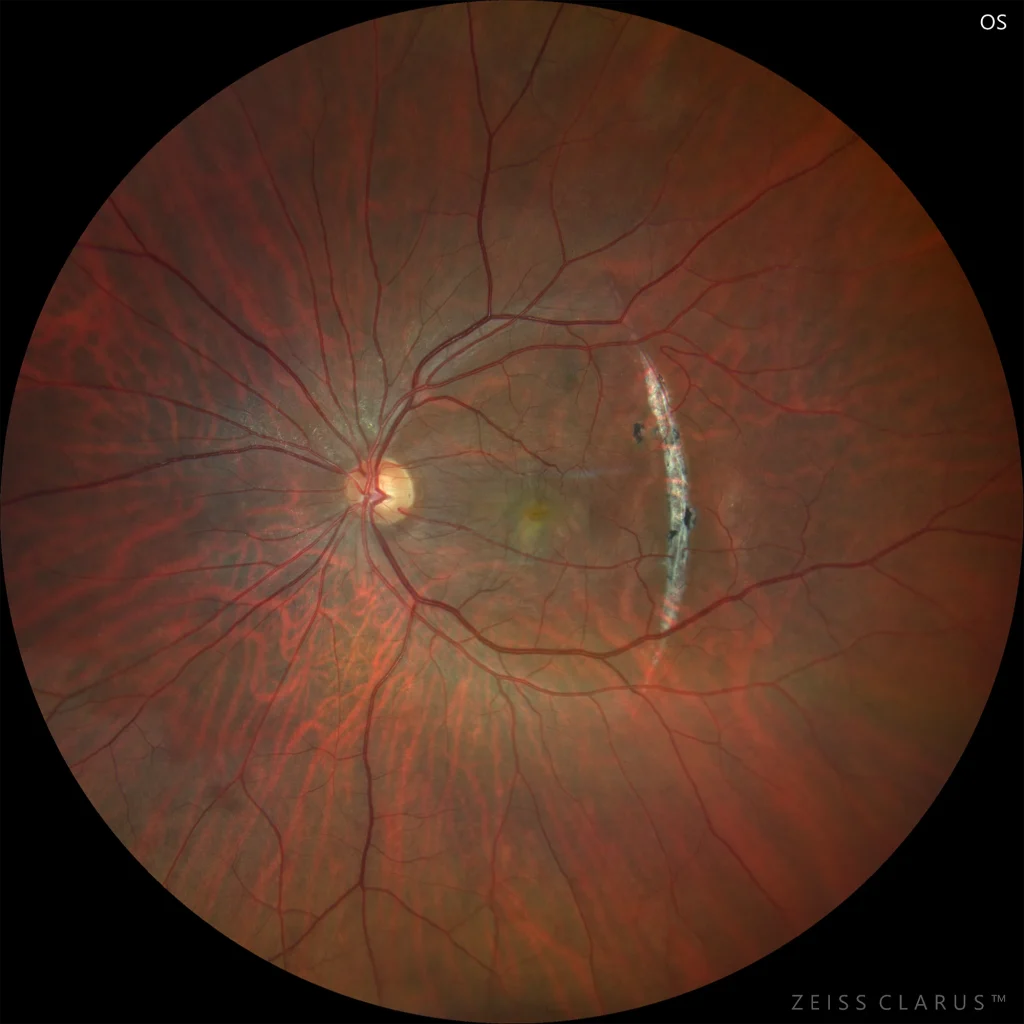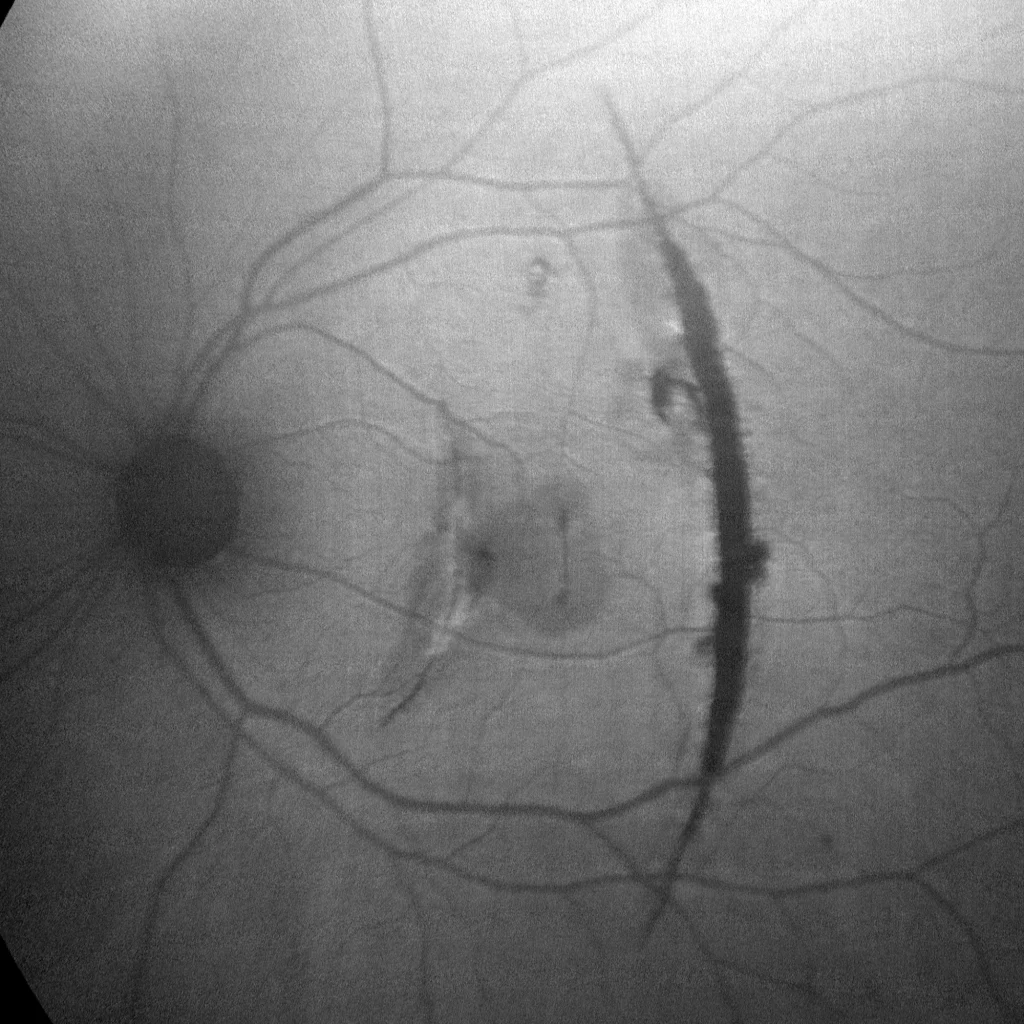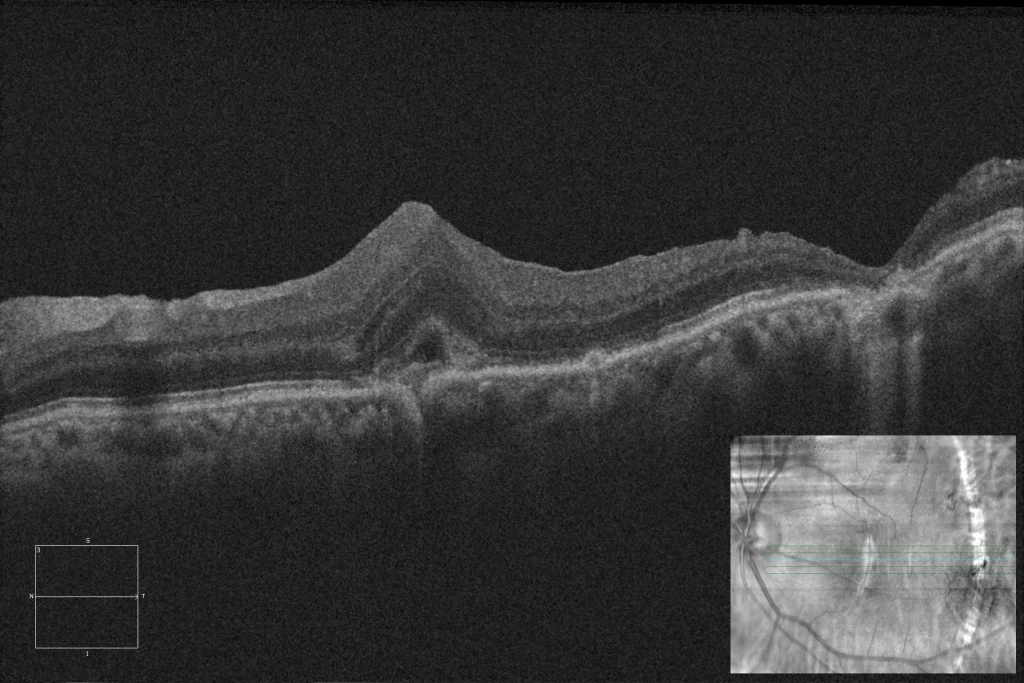< back
Traumatic choroidal rupture
Green fundus autofluorescence (detail): Crescent-shaped hypoautofluorescent lines (choroidal ruptures), with hypoautofluorescent area due to subretinal hemorrhages
Color: Disappearance of hemorrhages with persistence of choroidal ruptures. The foveolar rupture is difficult to identify in the color image.
Green fundus autofluorescence (detail): Perfectly delineated choroidal ruptures as crescent-shaped hypoautofluorescent lines.
Description
Choroidal rupture occurs mainly after blunt trauma to the eyeball. It usually appears as a crescent-shaped streak concentric to the optic nerve. The visual prognosis depends on the degree of foveolar involvement, as well as the possible appearance of secondary neovascular membrane.

